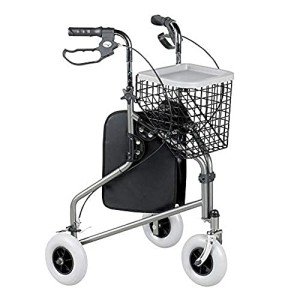As people age, keeping mobility ends up being important for protecting self-reliance and quality of life. For lots of seniors, walking aids such as walkers offer a valued option to help them browse their environment safely and with self-confidence. This post looks into the multifaceted world of senior walkers, including their types, benefits, use, and some regularly asked questions.

Walkers, frequently referred to as Walking Frame frames, are mobility aids designed to supply assistance and balance for individuals who might have problem walking independently. They typically consist of a sturdy frame, grips for holding, and often, wheels for ease of movement. Comprehending the various types of walkers available can help seniors and their caretakers make well-informed decisions.
| Walker Type | Description | Best For |
|---|---|---|
| Standard Walker | A four-legged frame that should be raised to progress. | Seniors requiring optimum stability. |
| Two-Wheeled Walker | A walker with 2 wheels on the front for much easier mobility. | Those with minor balance concerns. |
| Four-Wheeled Walker | A walker with 4 wheels, typically consists of a seat and brakes. | Active seniors requiring mobility and rest periods. |
| Rollator Walker | A type of four-wheeled walker that is Lightweight Walker and foldable. | Seniors who are more active and require small support. |
| Platform Walker | A specialized HOMCOM Folding 4-Wheel Walker with Seat & Bag with a platform for support, often used in physical treatment. | Individuals requiring particular assistance for injuries. |
Senior walkers supply many benefits that significantly improve the mobility and self-reliance of elderly individuals. Here are a few of the most notable benefits:
When selecting a walker, different factors must be thought about to make sure the best fit. Below are bottom lines seniors or caretakers must examine:
To make the most of the Benefits Of Rollator Walker and decrease dangers connected with walkers, correct usage methods are vital. Here are steps seniors ought to follow:
The rate of senior walkers can vary based upon functions and products used. Requirement walkers might cost as low as ₤ 30, while sophisticated models with wheels and seats might vary from ₤ 50 to ₤ 150.
Indications that a senior may need a walker can include frequent stumbling or losing balance, a recent surgery or injury impacting mobility, and preventing walking or participating in social activities.
Yes, walkers can be an important part of physical treatment, helping seniors restore strength and dexterity through safe movement.
Walkers can be acquired at medical supply stores, drug stores, or online merchants. Some insurance coverage strategies might even cover part of the expense.
Routine maintenance involves looking for loose parts, ensuring brakes function properly, and cleaning the frame to prevent rust or wear.
Senior walkers are a vital resource for preserving mobility and self-reliance as one ages. With numerous kinds of walkers offered, it is essential for seniors and caregivers to consider personal needs, usage, and comfort when picking a suitable walking aid. By encouraging safe mobility, walkers not only enhance physical abilities but likewise positively effect social connections and mental wellness.
Through appropriate usage and care, seniors can enjoy an active, engaging way of life, strengthened by the support of their walker. Comprehending the importance of mobility aids like walkers is essential in promoting improved life quality for seniors facing mobility difficulties.
No Data Found!

